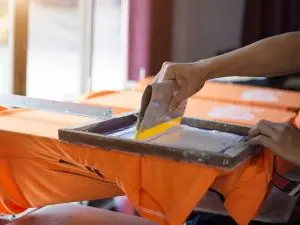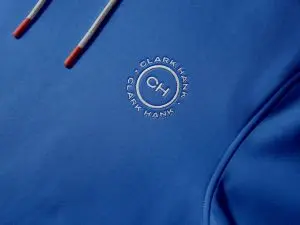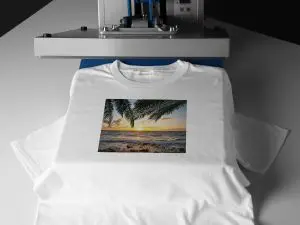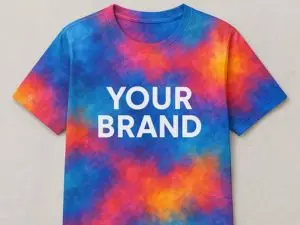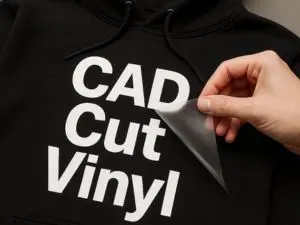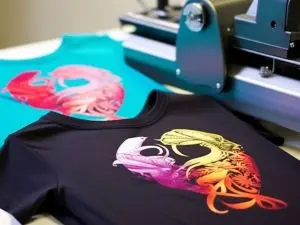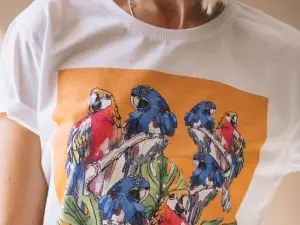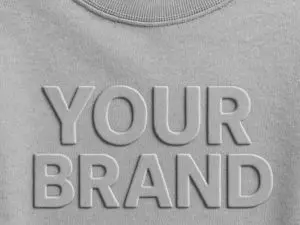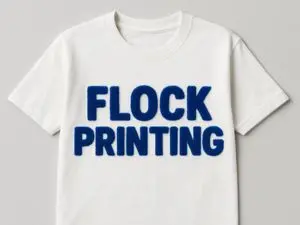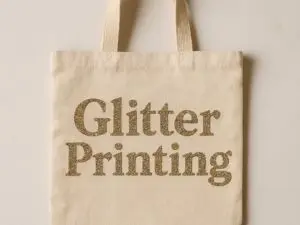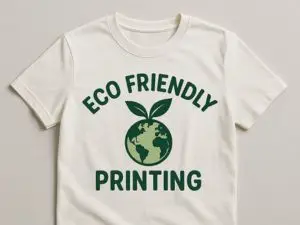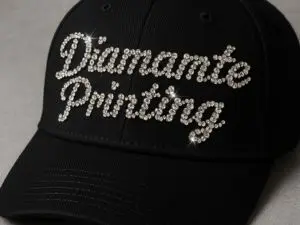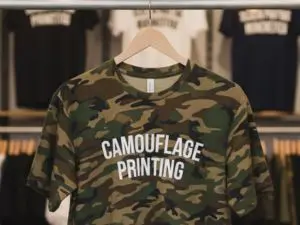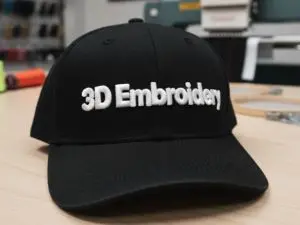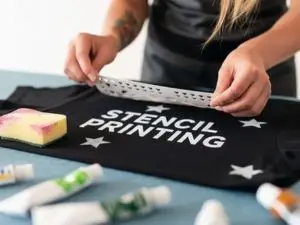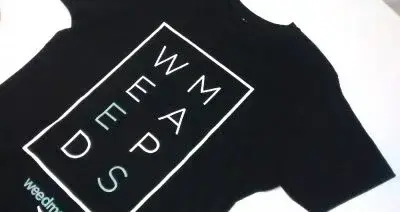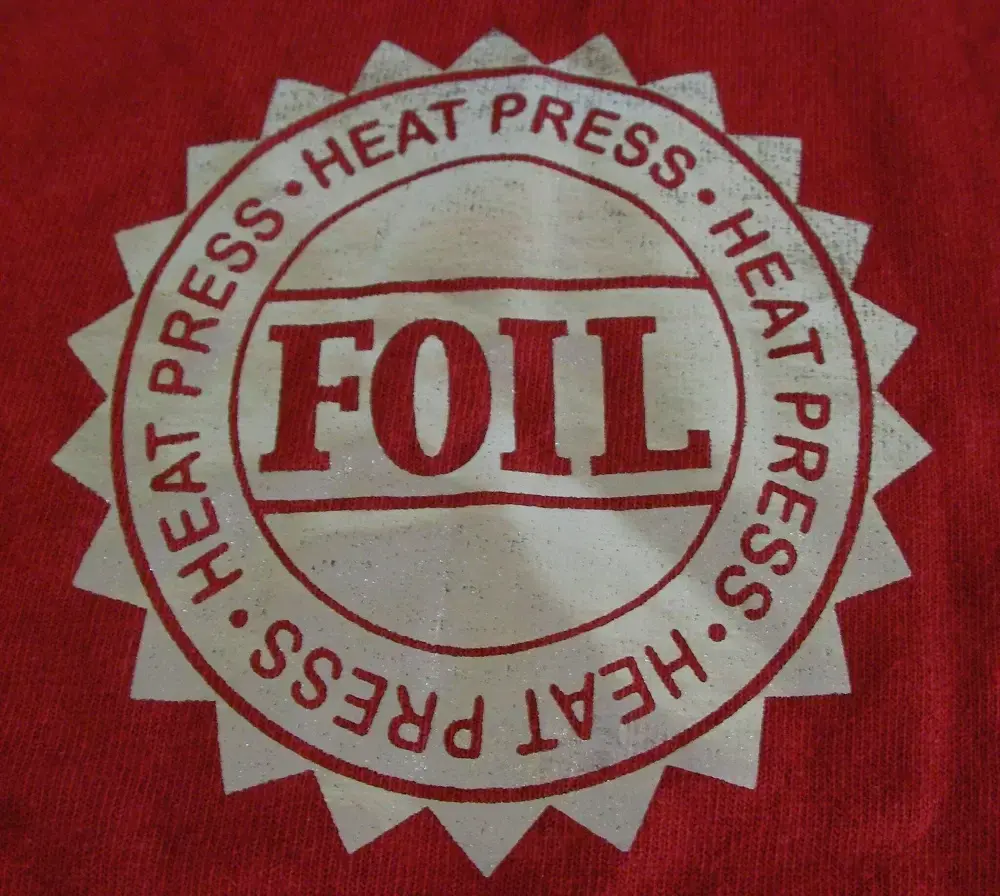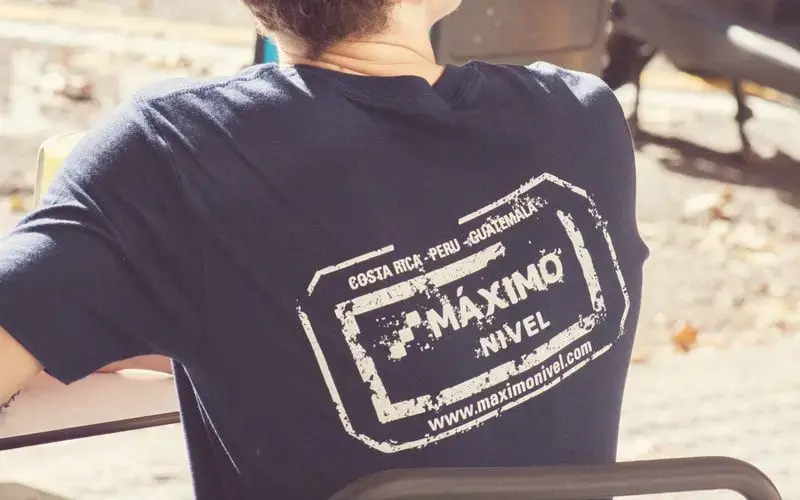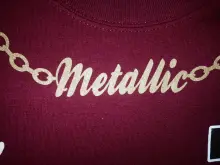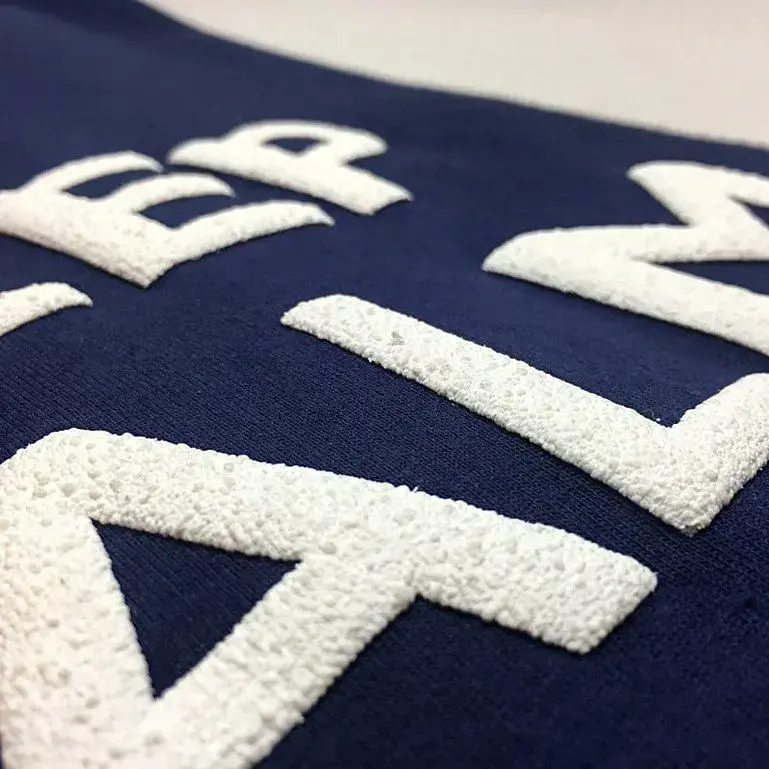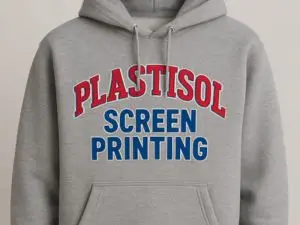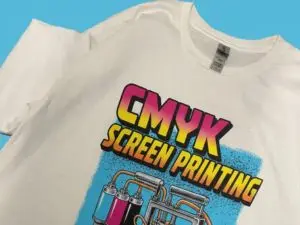What is Carbon Fibre Cad Cut Vinyl printing?
Carbon Fibre CAD Cut Vinyl Printing is a specialty garment decoration technique that combines the precision of CAD (Computer-Aided Design) cutting with the visual and textural appeal of carbon fibre-patterned vinyl.
Carbon Fibre Cad Cut Vinyl printing is an excellent way of creating eye-catching clothing and accessories. You can make designs with a unique two-tone finish by using this specialised vinyl material.
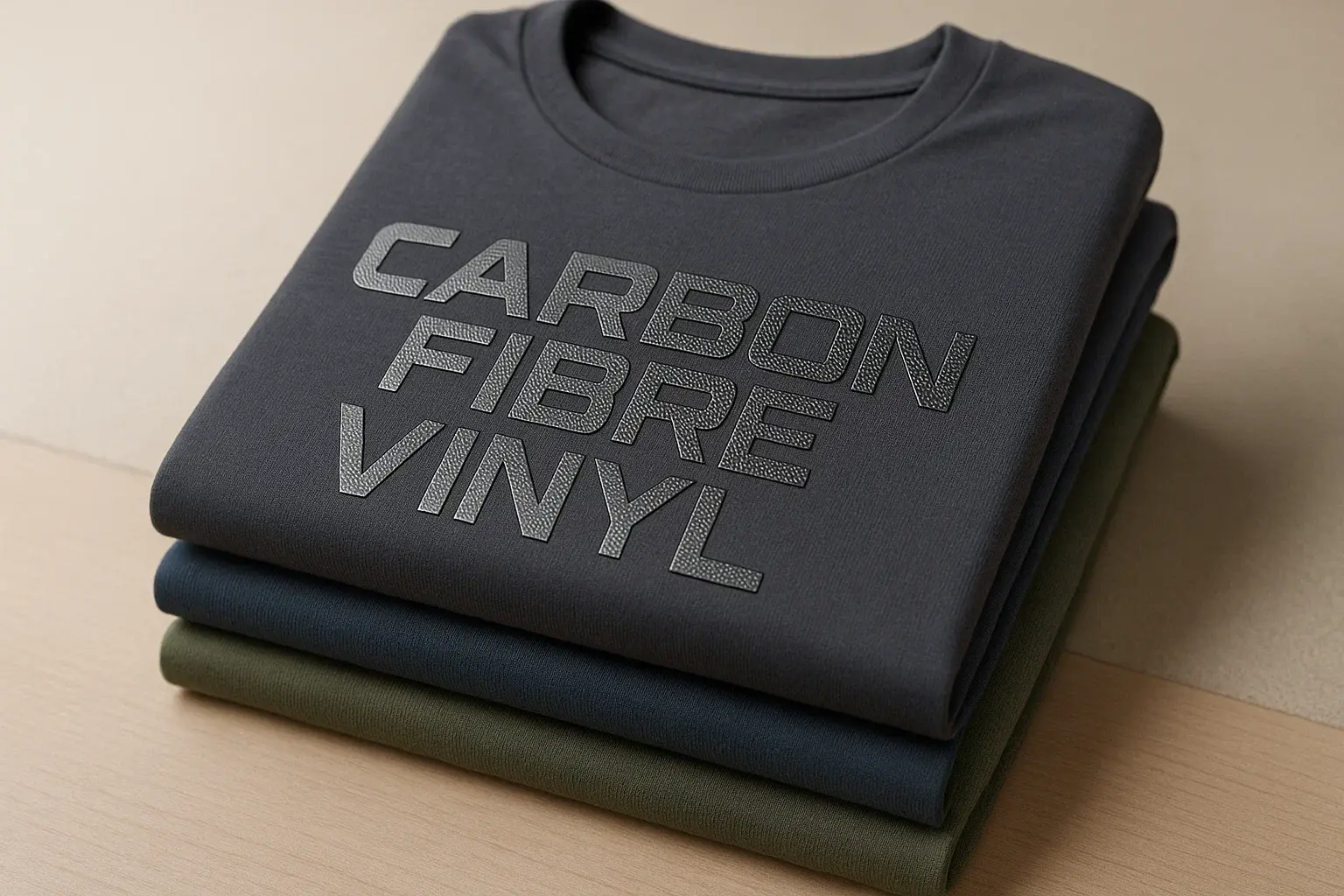
Why Choose Carbon Fibre Cad Cut Vinyl printing?
Carbon Fibre CAD Cut Vinyl Printing isn’t just a technique — it’s a style statement. For brands that want to project innovation, durability, and a tech-forward edge, this vinyl finish delivers both visual impact and tactile sophistication. The carbon fibre texture gives garments a premium, industrial look, echoing high-performance industries like motorsport, tech, and urban fashion. Whether you're branding workwear, custom sportswear, or launching a limited-edition streetwear drop, the result is always clean, bold, and memorable.
What makes it a smart move for companies? Precision. Each design is digitally cut for pixel-perfect logos, typography, or icons - ensuring consistency across production runs. It’s also highly durable, standing up to washing and wear without losing its punch. And let’s not forget its unique aesthetic: subtle sheen, woven texture, and sleek attitude - the perfect combo for brands that value originality and want to stand out in a sea of standard prints.
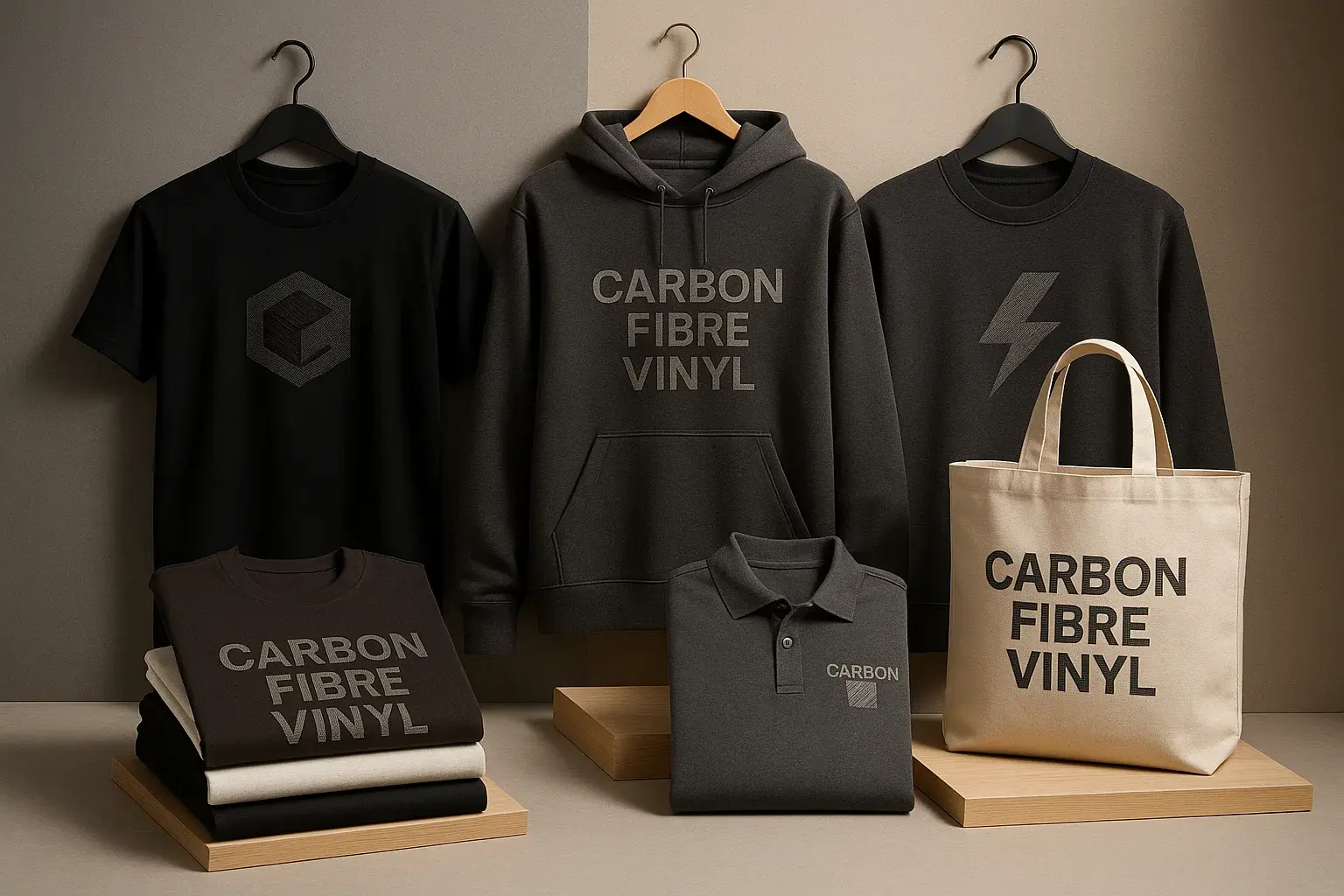
Process Of Carbon Fibre Cad Cut Vinyl printing?
Carbon Fibre Cad Cut Vinyl Printing, or CAD (Computer Aided Design) Cut Vinyl printing as it’s also known, is very similar to transfer printing, except it’s only suitable for designs which consist of one or two colours. It’s a method of heat transferring onto T-shirts and clothing.
It is most commonly used on sports T-Shirts for printing the numbers, names, and logos onto them. CAD-Cut vinyl is actually the material that’s used to print onto the fabric, and it is cut with the aid of a computer. The process involves cutting out your designs, logos, shapes, names or numbers from a special vinyl material. The designs are cut using industrial cutting machines or plotters.
It enables one or two colour designs and logos to be printed very quickly and is a great option for names and numbers on promotional clothing and printed sports clothing.
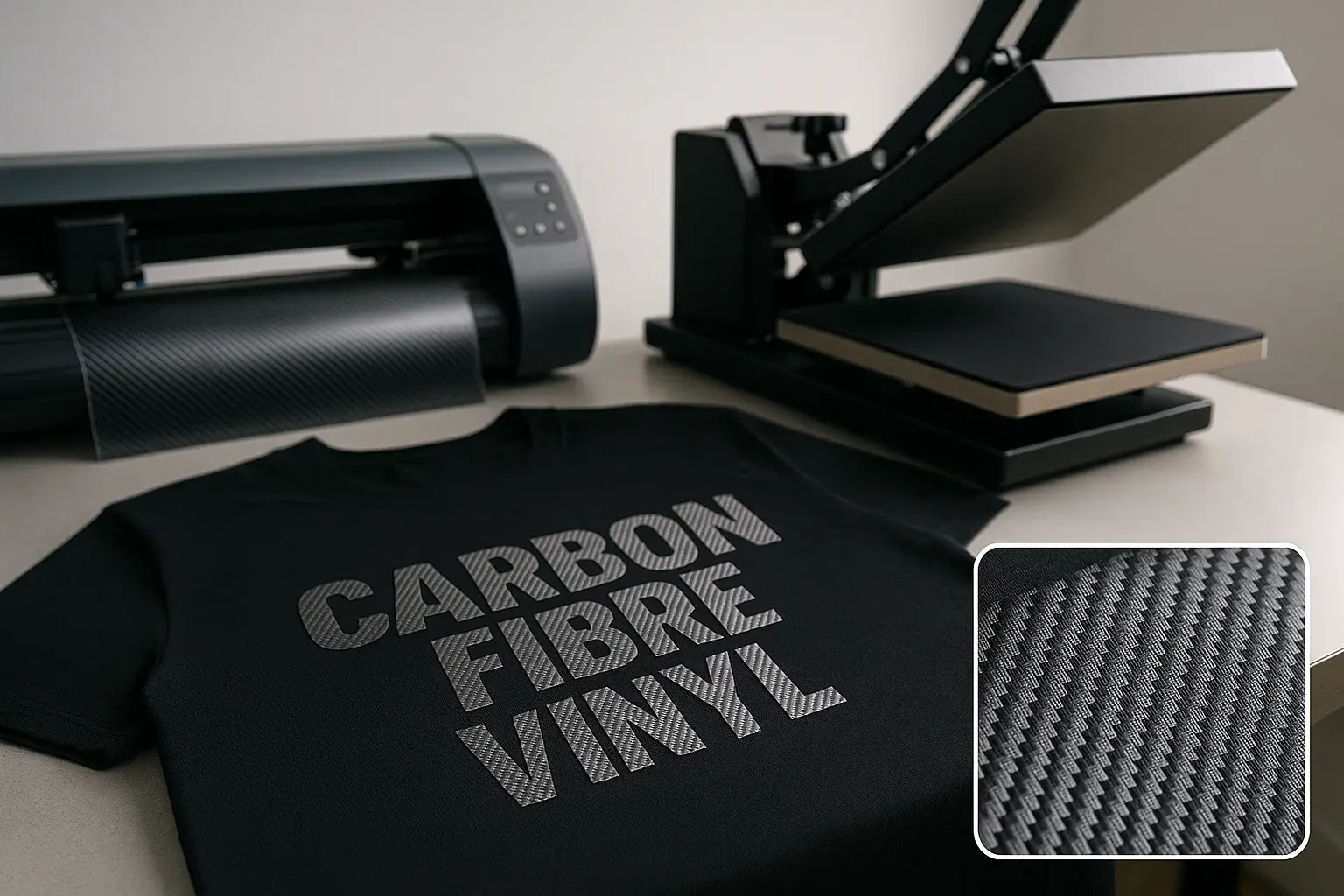
Vinyl Printing Techniques
Beyond Carbon Fibre Cad Cut Vinyl Printing, there’s a whole world of specialty vinyl options — each with its own look, feel, and purpose. Whether you’re after sparkle, texture, flexibility, or high visibility, there’s a vinyl technique to suit your style and brand goals.
Discover the different types of vinyl printing, their strengths, limitations, and how to choose the right one for your next custom project. Dive in and find out how these options can elevate your branding and make your garments stand out — from classic CAD Cut Vinyl Printing, to reflective vinyl printing for safety and visibility, holographic vinyl printing for futuristic shine and even diamante printing novelty wear. Each has its own charm and strategic uses. When used right, they turn simple apparel into unforgettable statements.
Although best suited to simpler designs with a small amount of colours, films such as flock, foil and glow in the dark can be combined with screen printing or direct to garment printing for a special finish..
Please Note:
Printed garments are more sensitive and need extra attention when it comes to washing. To preserve the print and the garment, it is recommended that you wash it inside out on a cold wash. Do not use a tumble-dryer and do not iron over the print.
Advantages of Carbon Fibre Cad Cut Vinyl Printing
1. Unique Textured Aesthetic
Carbon fibre vinyl has a distinctive woven texture that mimics real carbon fibre, giving your designs a sleek, modern, and high-tech look. It adds a tactile and visual edge that standard vinyl simply can't match - perfect for motorsport brands, tech-inspired fashion, or any product that screams performance and innovation.
2. High Durability & Longevity
This type of vinyl is extremely tough. It’s resistant to cracking, fading, and peeling - even after multiple washes. That makes it ideal for workwear, sportswear, or promotional garments expected to endure heavy use while still looking sharp.
3. Crisp, Clean Detailing
Because it’s digitally cut, the Carbon Fibre CAD process allows for razor-sharp edges and perfect replication of logos, lettering, and intricate graphics. It ensures consistency across garments, which is especially important for branded merchandise or uniforms.
4. No Ink, No Mess, No Drying Time
Unlike screen printing, there's no ink involved. That means faster production and no waiting around for things to dry - making it great for short runs or on-demand printing.
5. Bold Contrast on Dark Fabrics
Carbon fibre vinyl stands out especially well on dark or solid-colour garments. Its subtle sheen and textured surface catch the light beautifully, adding depth without being flashy — a great balance for corporate branding or premium streetwear.
6. Compatible with a Range of Garments
It works well on cotton, cotton-blend, and polyester fabrics, offering versatility across product lines. Whether it’s tees, polos, hoodies, or even caps and bags - carbon fibre vinyl adheres smoothly and securely.
7. Professional, Premium Finish
The overall result feels elevated. It communicates quality, intention, and edge, which is ideal if you're a brand that wants to impress - from boutique labels to tech-savvy merch drops.
8. Cad Cut Vinyl Printing is ideal for low-quantity T-Shirt runs
Workwear, sports clothing (such as football and rugby tops) where you need names and numbers. It is ideal for garment printing of 1-3 colours of smaller quantities, for example, a football team’s strip. It’s also perfect if you’re looking to create simple T-Shirts and vests as well as promotional clothing, one-off T-Shirts and stag and hen do tops.
Disadvantages of Carbon Fibre Cad Cut Vinyl Printing
1. Limited Design Complexity
This technique is best suited for simple shapes, logos, and bold text. Intricate or highly detailed artwork can be difficult to cut and weed accurately, especially with the textured carbon fibre surface - so it’s not ideal for photo-realistic designs or tiny fonts.
2. No Gradients or Colour Blends
Unlike digital or screen printing, carbon fibre vinyl is a solid material - meaning you can’t achieve gradients, shading, or full-colour prints. Designs are flat and single-colour, which may limit creative flexibility for some brands or fashion concepts.
3. Less Breathability on Large Areas
When applied in large blocks, vinyl doesn’t allow the fabric to breathe well. That can make garments feel heavier or less comfortable — particularly for performance wear or warm weather clothing.
4. May Peel or Crack Over Time (with Poor Application)
Although it's highly durable when properly applied, incorrect heat press settings or fabric types can lead to peeling or cracking after repeated washing. It’s crucial to follow manufacturer guidelines — and not all printers do.
5. Not Suitable for All Fabrics
Carbon fibre vinyl may not adhere well to certain materials, especially fabrics with high elasticity (like Lycra or stretch sportswear). It works best on cotton, polycotton blends, and polyester — anything too stretchy can cause the vinyl to lift or warp.
6. Limited Eco-Friendliness
Compared to water-based screen printing or discharge screen printing, vinyl isn’t the greenest option. It’s plastic-based and not biodegradable, which might be a consideration for eco-conscious brands looking to reduce their footprint.
7. Labour-Intensive for High Volumes
Each piece of vinyl must be individually cut, weeded, and heat pressed. For large-scale orders, this can be time-consuming and less cost-effective compared to automated print methods like screen or DTG (Direct-to-Garment).
More Printing Techniques
Looking beyond carbon fibre? We’ve got a full toolkit of print and embellishment options - each tailored to different fabrics, textures, quantities, and budgets. Whether you’re after a soft retail hand for intricate artwork, rugged branding for workwear, subtle shimmer, high-visibility effects, or eco-conscious choices, we’ll pair your brief with the right method.
Additional Screen Printing Techniques
Looking to elevate your print? Our screen printing options add depth, texture, special finishes and extra impact - tailored to your garment, artwork and budget. Compare look and feel, durability, care, and typical order sizes. Share your design, quantities and deadline, and we’ll recommend a setup that keeps colours crisp, feels great to wear, and stands up to real-world washing and wear.

Get 10% off your first order
Get a quick quote for your next custom project and we'll
give you 10% off or free delivery when you spend £500 or more

